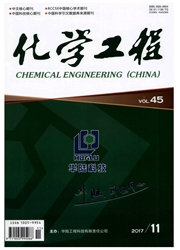

 中文摘要:
中文摘要:
以水蒸气为气化剂,利用自建的煤炭地下气化模拟试验系统模拟了鹤壁烟煤在不同温度下的地下气化过程。将模拟地下气化产生的粗煤气用深层地下水进行洗涤,并使用GC-MS检测煤气洗涤水中的有机物,模拟研究了煤炭地下气化对地下水可能造成的有机污染。结果表明:鹤壁煤气化过程中煤气溶解到地下水中的有机组分有108种,以脂肪烃为主,其次是卤代烃和芳香烃,同时检测到洗涤水中含有少量的苯系物和酚。参照国际癌症研究署(IARC)公布的《致癌物分类列表》和国家《危险废物鉴别标准》,苯及其衍生物、苯酚、甲酚、二甲酚以及萘等是主要的有毒有机污染物。地下气化过程中溶解在地下水中的污染物种类和浓度与气化温度有关。
 英文摘要:
英文摘要:
With steam as the gasification agent, underground coal gasification (UCG) model tests of Hebi coal at different temperatures were completed by self-made test system. Gas was washed by deep groundwater and GC-MS was applied to characterize the possible groundwater pollution from UCG by determining the organic components of gas washing water. The results could be concluded that up to 108 kinds of organic components were determined in washing water dissolved from gas in bituminous coal gasification, the most of which were aliphatic hydrocarbons, and secondarily halo-hydrocarbons and aromatic hydrocarbons, and a little of benzene series and phenols were also determined in washing water. According to the Carcinogenic Classification List published by the International Agency for Research on Cancer (IARC) and Identification Standards for Hazardous Wastes of China, benzene and its derivatives, phenols, cresol, xylenol as well as naphthalene made up the most parts of poisonous organic pollutants in gas washing water. It also shows that the varieties and concentrations of pollutants dissolved in groundwater varies with gasification temperatures.
 同期刊论文项目
同期刊论文项目
 同项目期刊论文
同项目期刊论文
 期刊信息
期刊信息
